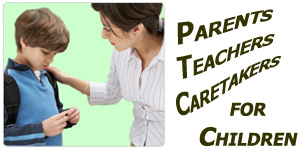 This week we have been talking to our students about making choices and decisions. Making choices is based on what is best for the group or even for us as an individual is what leaders do. So how do the best leaders make their choices?
This week we have been talking to our students about making choices and decisions. Making choices is based on what is best for the group or even for us as an individual is what leaders do. So how do the best leaders make their choices?
The simple answer is you need to consider what the results will be, the good and the bad that will come from the choice. One way of approaching that is to make a list of the “pros and cons”. Weighing the pros and cons, and I like to write them down, will help us to see the consequences – good or bad- that will result from either direction we may take.
Some choices may be very simple, while others may have more impact on our lives and our happiness. For instance choosing whether we get a pet or not get a pet, we will weigh out how much fun it will be vs how much work is involved. We may even weigh the differences and the affects of choosing a dog or a cat. It may be that an iguana might be the perfect pet for us.
Other choices may be more difficult. What if we had to choose between going out for a school play or spending more time on school work. There will be many things to consider both in short term and long term goals that we have. All leaders need to make these tough decisions and sometimes we are not really sure what to do. We want to remember that leaders do not have to know all the answers. They do need to have around them others that they trust though.
If you are a student you have your parents that you can go to and talk about your list of pros and cons to help you come to a good choice for you. You may even have other adults in your life that you may want to ask how they see a situation. Even your friends may be available to speak to, although you do need to be careful that you do not only seek out the advice of those that you think will agree with you.
If you are an adult it may be your partner or someone in the organization that you work for that may be there for you to bounce ideas off. It may be a trusted friend or an advisor or for many of us we may have a mentor that we can talk to. But in the end it is us as the leader that must make the final decisions. As a leader we do not want to “pass the buck” or even avoid risk-taking completely. We do want to make informed decisions that with all the information at hand will be best for those that are following us.
 Schools are not feeling as safe for many students as they once were. In fact on any given day 160,000 students stay at home due to fear of bullying or other forms of violence here in the United States. Everyone involved have concern in regard to the safety of children in school, from the children themselves to the parents and educators. Yet for many educators prevention and intervention is difficult due to a lack of specific training.
Schools are not feeling as safe for many students as they once were. In fact on any given day 160,000 students stay at home due to fear of bullying or other forms of violence here in the United States. Everyone involved have concern in regard to the safety of children in school, from the children themselves to the parents and educators. Yet for many educators prevention and intervention is difficult due to a lack of specific training.



